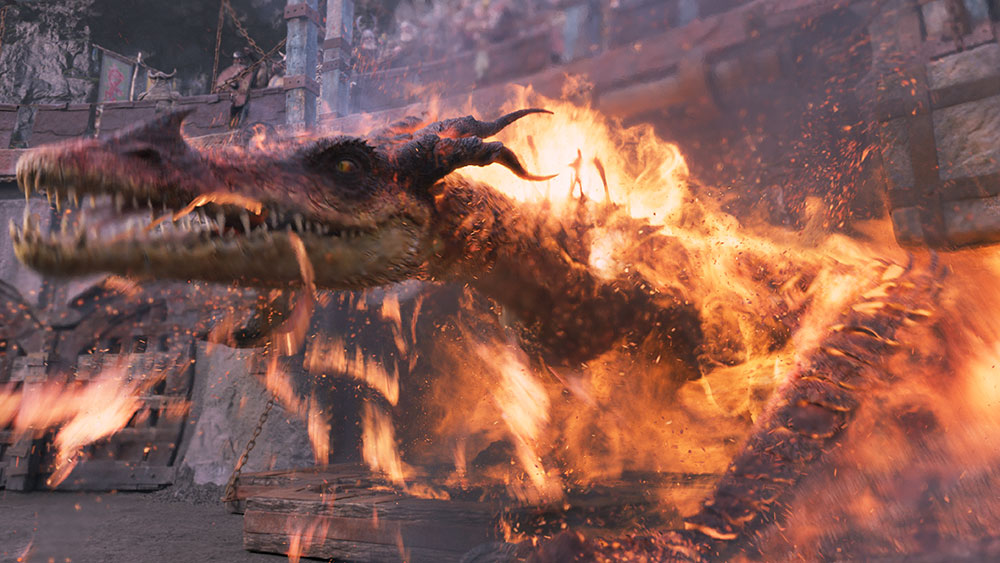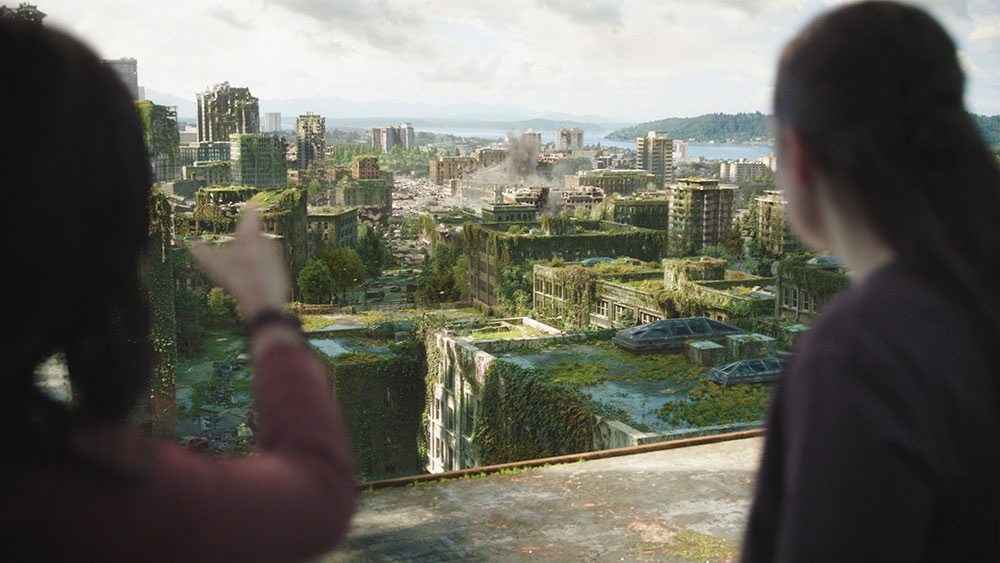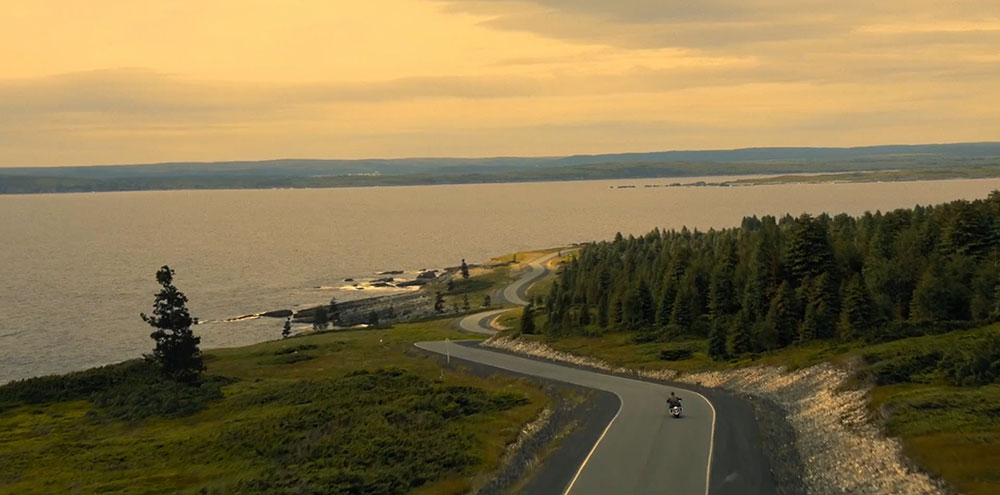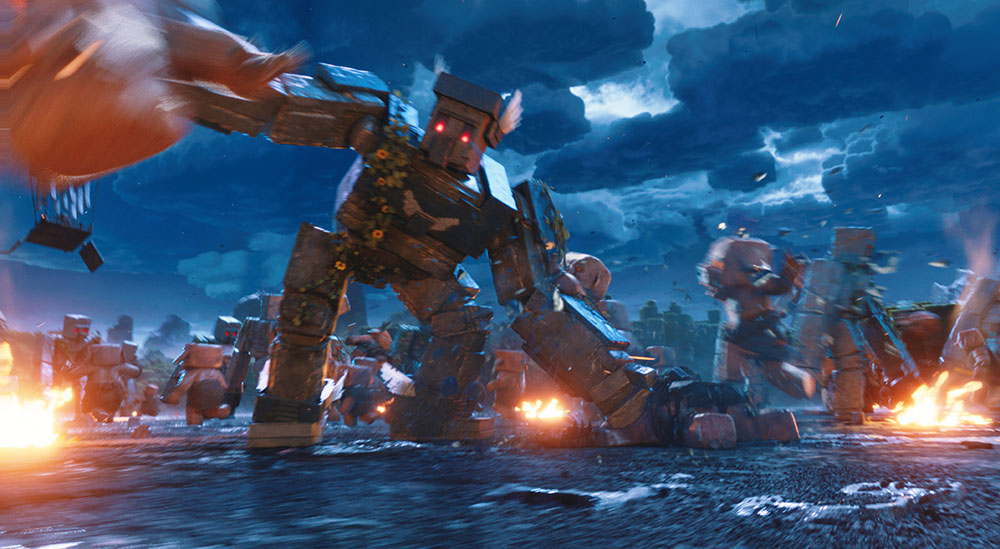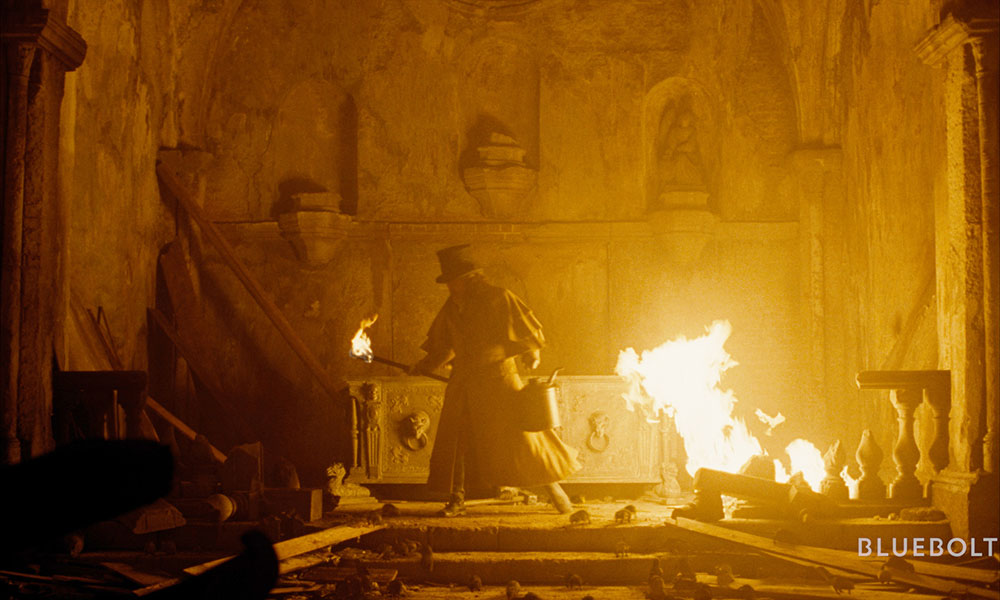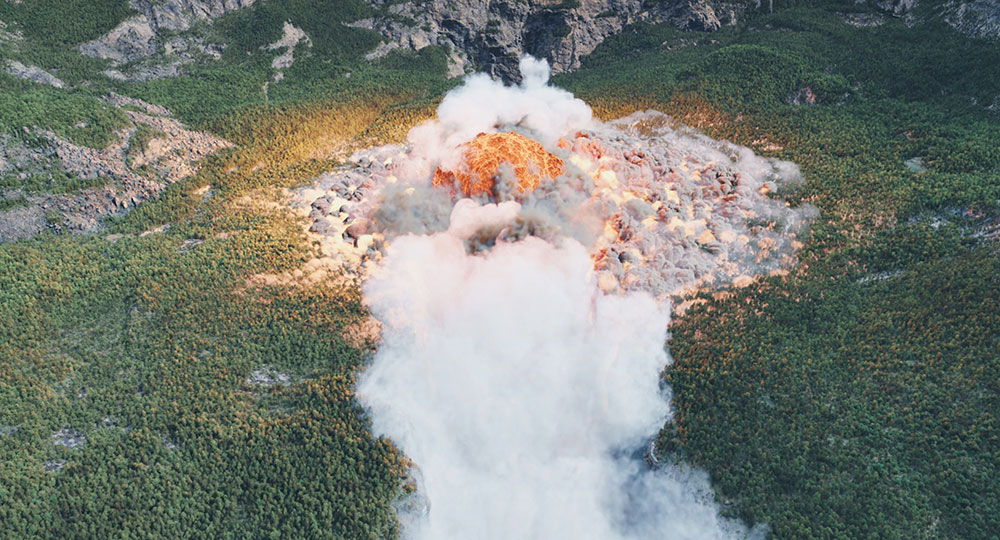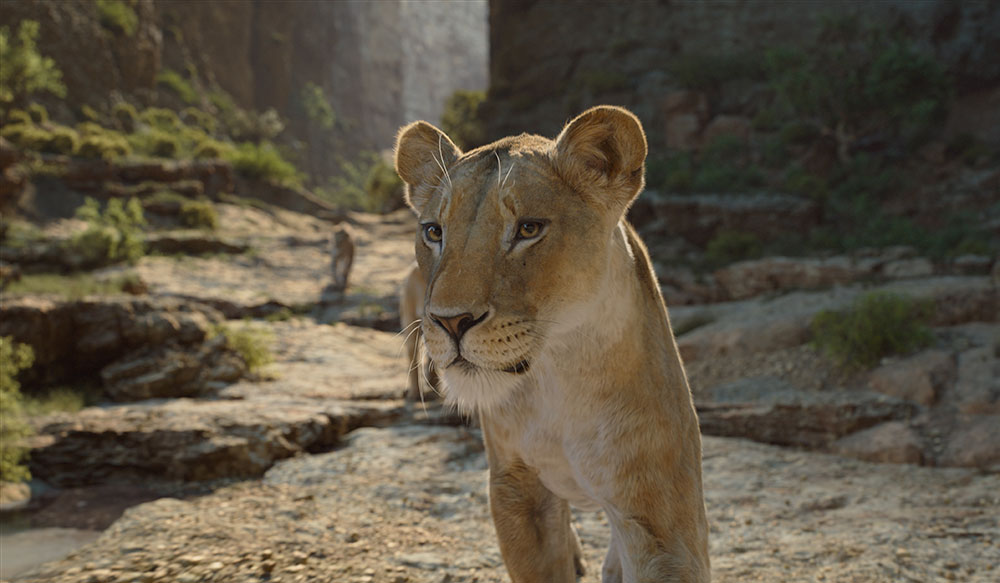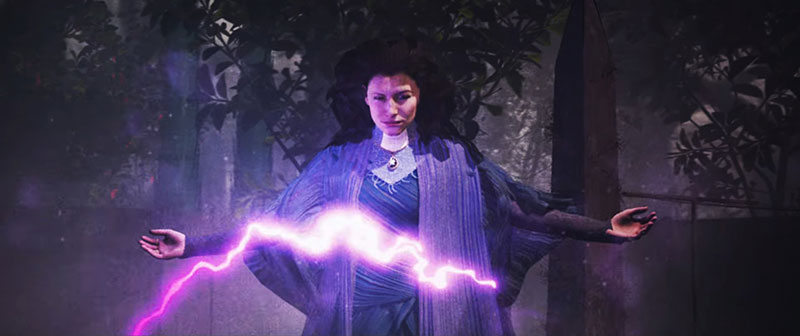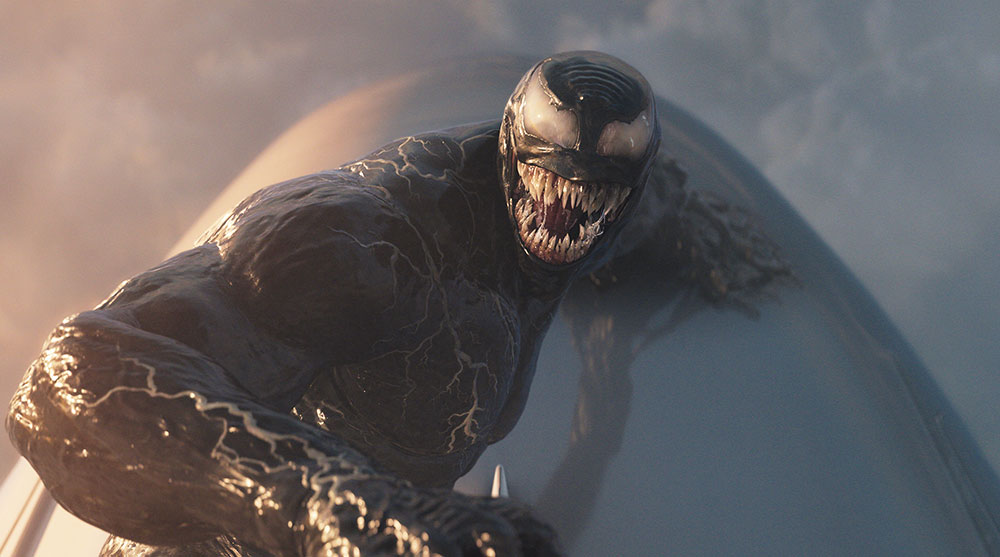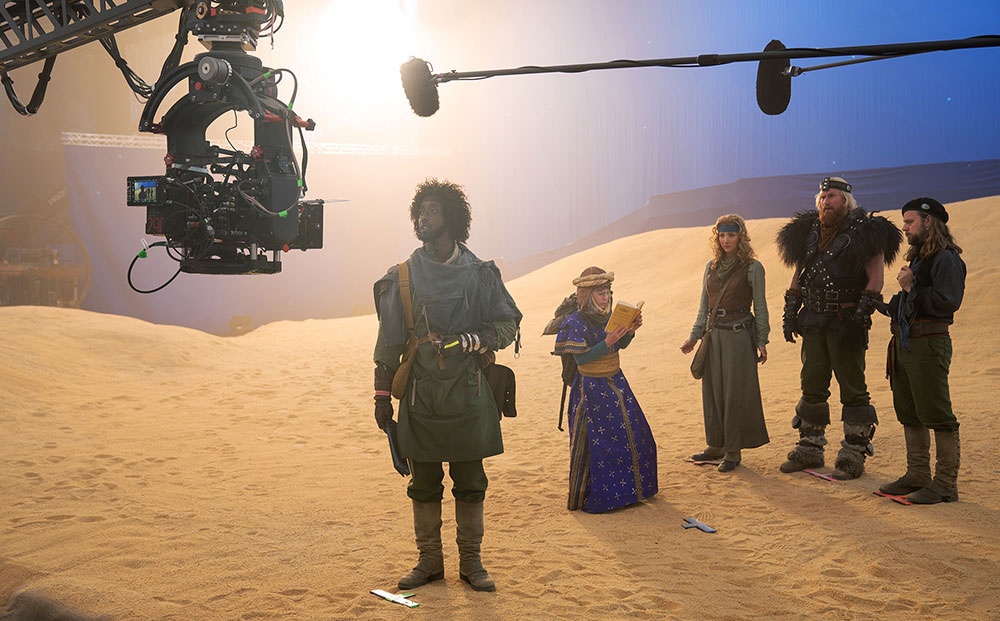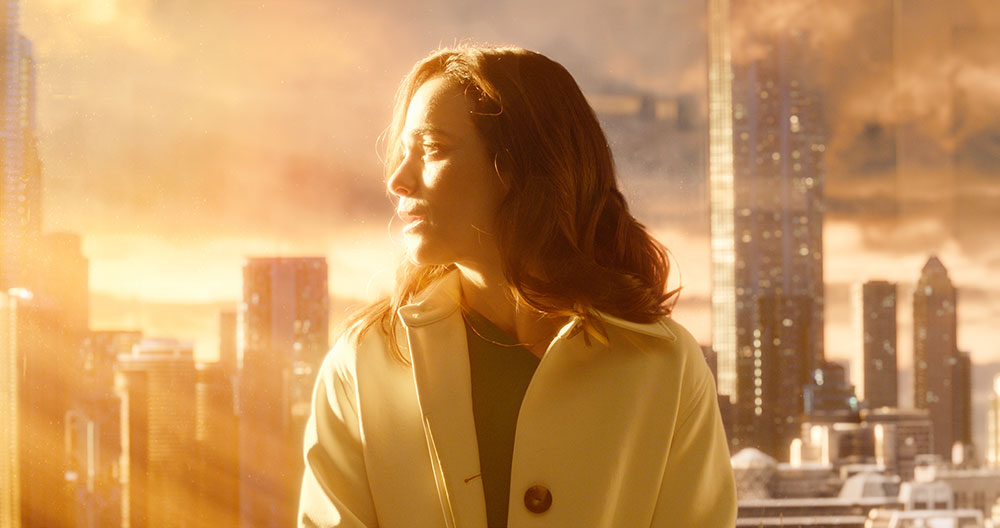RSP’s Dennis Jones talks about building ships, simulating the ocean surface and a creating a living treasure map for the live action adaptation of Eiichiro Oda’s famous manga, ‘One Piece’.
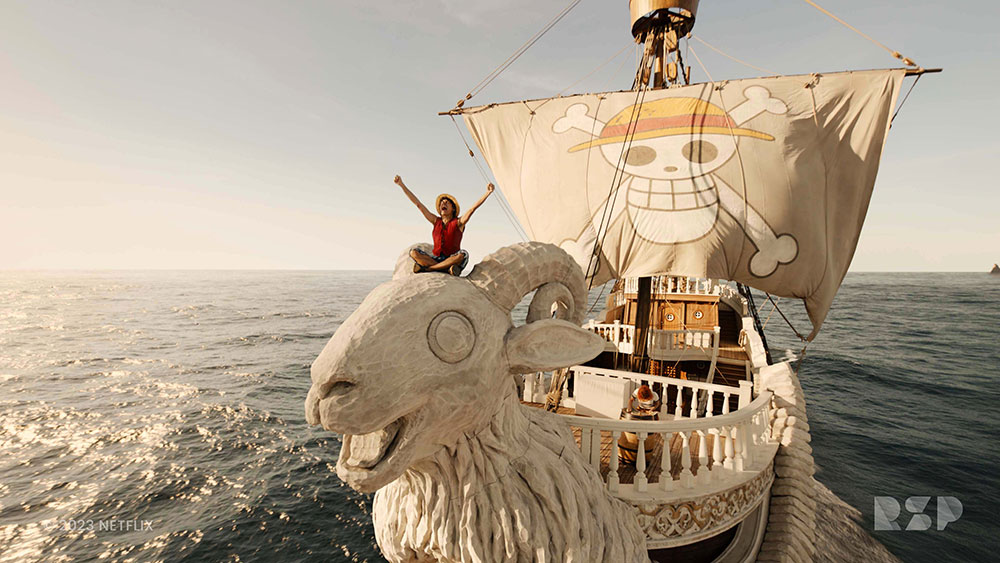

Rising Sun Pictures delivered more than 170 VFX shots for the first season of One Piece, the Netflix adventure series about the young pirate Monkey D Luffy and his crew on a quest for treasure and glory. The show is a live action adaptation of Eiichiro Oda’s famous manga, considered one of the best of all time. The RSP team’s work focussed on the fleet of fantastical naval and pirate ships that play key roles in the story.
One of the artists' primary tasks was building the Going Merry, the ship piloted by Luffy and his Straw Hat Pirates. A full-size practical version of the ship, with working sails, was built on set on location in South Africa. Scans and photogrammetric data were captured from this build, which the artists used as a base for a full CG replica.
Meet the Fleet
For some sequences featuring the Going Merry, the camera crew captured live action shots of the cast performing on the practical build. RSP’s 3D artists then enhanced these shots, creating digital elements to add detail and realism to the deck, jib, masts and sails. Other subtle enhancements revealed the effects of time and sea battles on the ship’s exterior.
Luffy’s main rival, Marine Vice Admiral Garp, commands a naval battleship with a canine theme. The production had a three-quarter scale deck built with the main masts partially completed and two working sails. RSP’s team built an entire CG version of the ship to use in all-digital shots or combine with live action, plus an elaborate extension for a partial set that included elements such as masts shaped like bones, and a crow’s nest shaped like a dog house.
The artists built more than a dozen other full CG ships, including Cooking George, a large ship topped by a chef’s hat, and Orbit, with a bow shaped like a wine bottle. “All of the ships are grounded in the One Piece manga, but we brought them into a live action world,” said RSP VFX Supervisor Dennis Jones. “It was fascinating to dig through artwork from the series’ 25-year history and soak up its special aesthetic. Our aim was to assimilate its spirit into our work as much as possible. Our modellers had great fun with it. We loved the journey.”
Between Fantasy and Reality
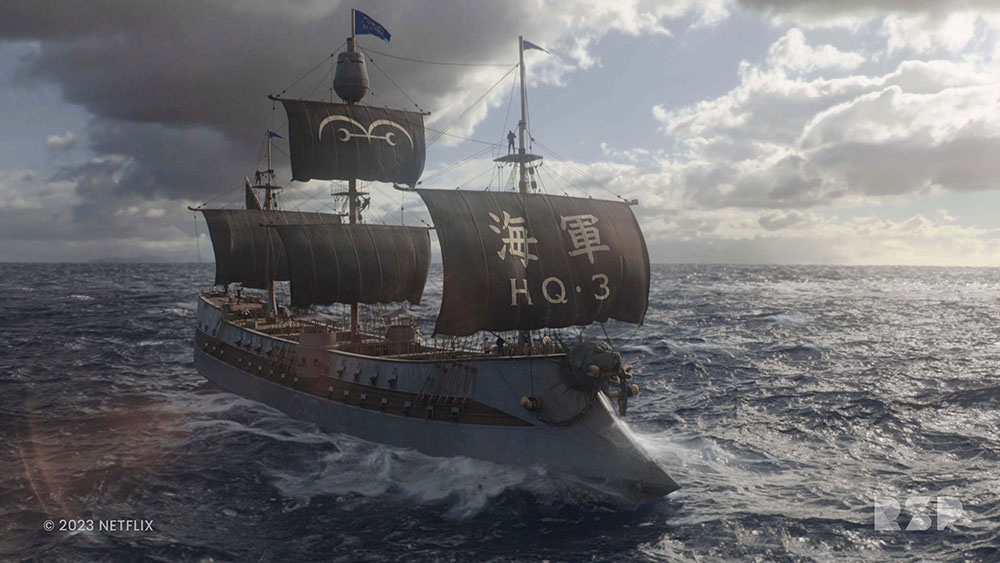
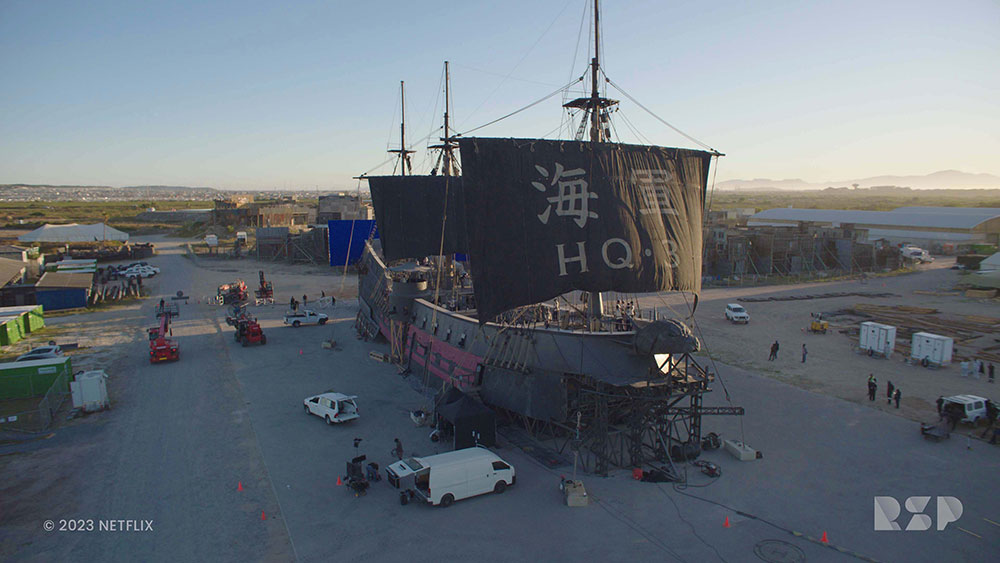
Coming from a comic strip, these ships are pure fantasy to look at. Oda’s drawing style is complex and detailed, focussing more on personality and drama than the real, 3D world. Nevertheless, the CG team aimed to give them believable, realistic qualities. “The practical builds helped establish the look and feel of how production wanted to realise Oda's work. We designed a number of ships purely from the artwork and tried to focus on the unique little touches each character brings to their style,” Dennis said.
“Settling on their proportions was especially tricky. The manga’s ships generally have small sails and big hulls but, of course, when you try that in real life, it just looks wacky because the sail also serves a functional purpose. Making absurd things, such as the Love Duck or Cooking George with their gaudy colours and giant figureheads, look practical and grounded could be quite a challenge.”
By studying technical drawings of caravels and galleons dating back to the 15th century as well as more modern cruise ships, sloops and tankers, they pulled in features that made the ships appear more seaworthy. CG Supervisor Naeem Chudawala said, “We asked ourselves, what features would each of these ships have if it were built in real life? Ships of the pirate era had large sails, tall masts, complicated rigging and distinctive portholes. We were careful to apply ropes and chains in a way that conformed logically with their function.”
Dennis also noted that, generally, they try to find key reference clips and then recreate the reference using their own assets. “Then we compare and refine to match the reference as closely as possible. In the case of boats for One Piece, we found tall ship reference and used it to refine and adjust our development work. Speed, sail cloth, lighting and wave interaction were all refined this way to come as close to reality as possible,” he said.
Ocean
For the water itself, Dennis and the crew spent weeks developing a single simulation that could be used for ocean elements across various scenes. “It had to work with different camera angles, perspectives, times of day and weather,” he said. “Something that looks brilliant in a wide shot might appear too big in a close-up. We experimented with different frequencies until we hit on one that worked consistently. We then used more traditional compositing techniques to create dynamic effects such as wakes and splashes as ships move through the water.”
He remarked that a lot of ocean work starts with producing noises that interact. The interactions generate wave height information, which defines the surface look, shape and speed. From there, it's about combining enough types of noise to effectively balance low, medium and high frequency wave features. “Ideally you find a good balance that will work from close up to very wide,” he said. “All of our wake and water effects are 3D, with lens flares and a few water-on-lens elements to help with shot integrations.”
Setting Sail
Building the ships was only the beginning. Setting them in motion and integrating them into sailing sequences proved more challenging and involved creating wind, water and other environmental effects. Dennis said that typically they choose to finalise the design of such assets first and then start on the simulation work, ‘cheating’ slightly to adjust the boat collision shapes to avoid odd-looking behaviour. “Ropes and sail had a similar approach where design is the priority and simulation is engineered to suit,” he said.

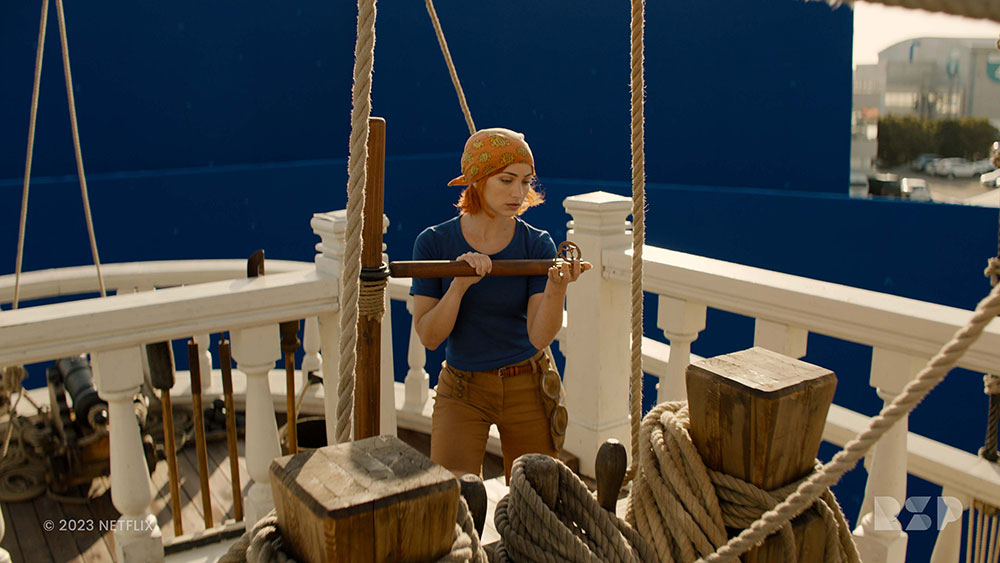
“Once development is done we generally end up with a system that can accommodate low, medium, high conditions – all within our expected performance range. So for instance, the Going Merry in a strong wind would first need faster movement through ocean, done in the animation and layout stage. Then we would need stronger wind forces on the sails, handled through cloth FX. Finally, the FX team would create larger waves with spray matching the wind direction.”
Gathering Speed
From there, placing the ships into the water and getting them to move naturally involved working carefully back-and-forth between the studio’s CG and compositing departments.
Compositing Lead Boini Bharghava said, “We set up a system that allowed us to move the ships at whatever speed we wanted. They would interact naturally with the FX ocean, generating wakes depending on their speed. For individual shots, production supplied initial direction for the blocking and the look, and we took it from there. If a shot iteration needed adjustment, our system made that happen quickly.”
Because the ship speed and water FX were fairly independent systems, the Layout/Animation process would dictate the speed of the ships – on average, 14 to 20km/h. For the amount of movement the ships would need, based on wave heights, the team had an animation cycle taken from matching the real boats. They usually made the motion correct in Layout and would then nudge the effects to work with this speed.
Into Action
Having prepared this array of assets, simulations, looks and effects, the team was ready to take the CG ships through several extended high-action sequences. One of these develops into a thrilling chase as Garp’s battleship pursues the Going Merry and fires cannon balls at her. RSP’s VFX team supplied the cannon balls, sparks, smoke, impact debris and other associated effects. In another epic-scale scene, this time occurring at night, a tall-masted ship capsizes during a violent storm, with effects elements including mist, sprays, swells and thunder clouds building the drama.
Dennis said, “For the more intense shots, like crashing waves, we would generate a low resolution FX water surface and then animate our ships to work within this simulation. For instance, the night time storm featuring the wave that capsizes the Cooking George and Orbit Galley was done using this method – the effects simulation needed to react correctly so that getting a strong wave felt appropriate, and then we dressed the boat performance into this action.”
With the ocean simulation in place, the ships as 3D assets and a 360 skydome, they were prepared to deliver all-digital ocean-going shots whenever necessary, reintroducing the plate where applicable. Identifying which shots needed what kind of treatment was pretty straightforward. “Anytime you see the boat contacting the water meant 3D replacement and splashing wake effects," he said. "If the action was on the deck, it was likely to need only a background replacement. Nevertheless, such shots still required matching the plate, generating moving boat effects and creating a wake that would be visible from the back of the boat.”
Lights
When managing such complex shots, the work doesn’t end with simulations and FX, matte painting extensions and invisible CG-to-live action integration. The compositing team stepped in to apply essential visual aesthetics that brought RSP’s widely varying shots to life. “Over most of the shots, the lighting setup was fairly consistent – a beautiful late afternoon sun – which meant we got a lot of reuse out of a few lighting/environment setups,” said Dennis.
“The main challenge was matching plate shadow direction while keeping shape and interest across the ocean surface. After ensuring the keylight always matched the plate, we would add shaping lights that allowed us to cheat specular and lighting interest per shot for the oceans. We kept a lot of the original plate sky as well, blending it into our digital sky and horizon – it required a little grading per shot, but generally our lighting was close to the final version.”
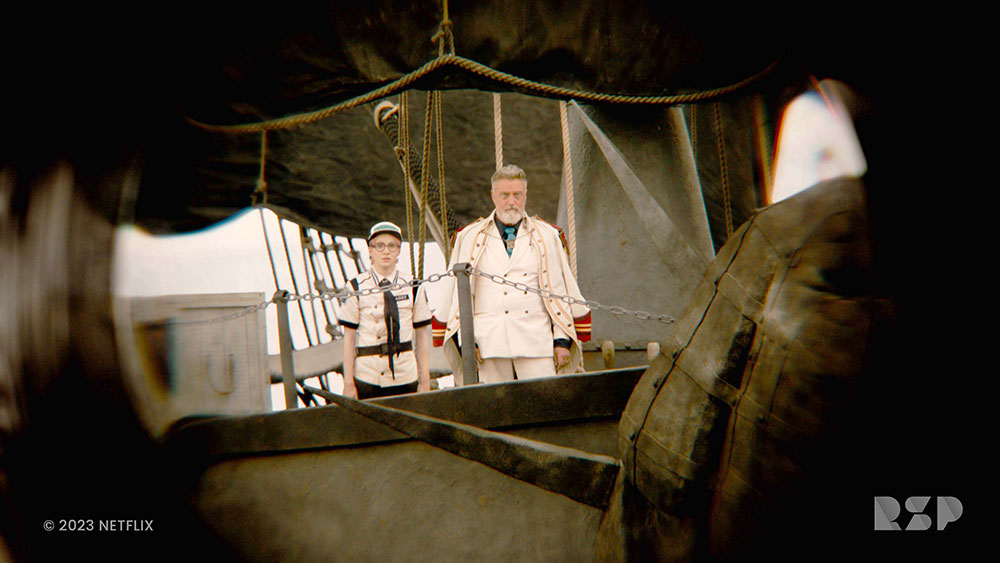
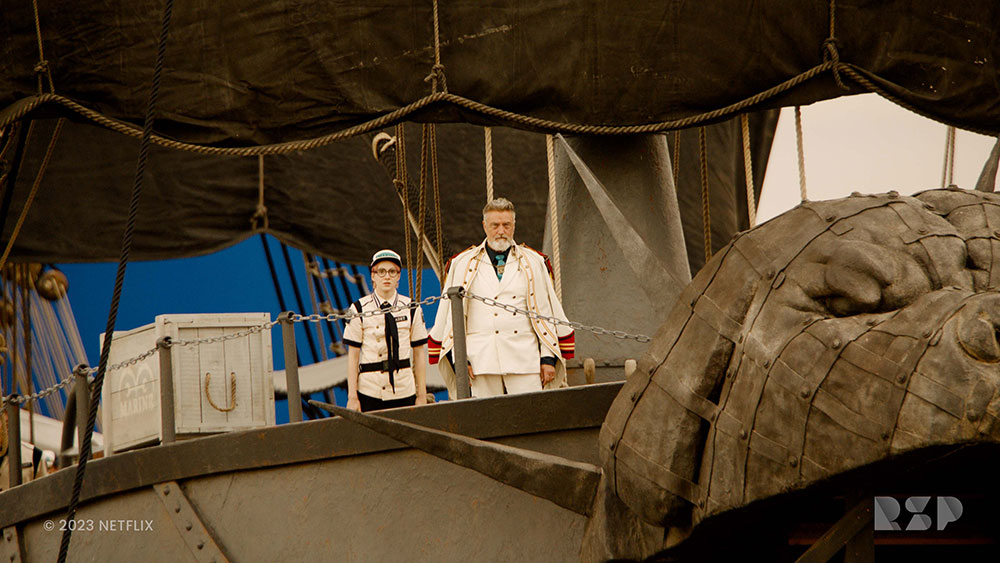
Through several months of VFX production, RSP collaborated with the series’ production team, Netflix and Eiichiro Oda himself. VFX Producer Nigel Venning commented that the feedback was very positive. “Oda commented on how happy he was with the development of the ships, and that was much appreciated by our artists, many of whom are longtime fans of the One Piece manga.”
Treasure Map
Perhaps the project’s most complex task was the series’ opener, a creative sequence designed to engage viewers that begins with the camera moving over a pirate map of the world before landing in the small harbour town of Loguetown, birthplace of the last Pirate King. The narration comes from a long dead pirate who describes the legend of One Piece, a treasure that holds the key to becoming King of the Pirates.
RSP created a large collection of elements for the sequence including the map, Loguetown itself and the more than 20 ships that fill its harbour. “The opening sequence establishes the world of One Piece. We’re letting the audience know what to expect,” said Naeem Chudawala. “As we travel across the map, we visit important stops in the story such as a swamped ship, sea creatures and so on.”
When the team was handed this sequence, they were facing a task with over 1,000 frames of content and very open brief without much creative constraint. “The work involved lots of moving parts. We had a plate for one-third of the background of the shot, and knew we needed to blend invisibly from a map element into this plate and then incorporate further vendor work for the city extension,” said Dennis.
“This brief came near the back end of the schedule and required us to design, build and choreograph a multitude of extra, unique tall ships capturing the feel of characteristic 'Oda' designs, and then a further collection of slightly more generic ships to fill out the scene. Each of these ships has multiple sails and associated effects and water interaction. This environment would be in flux until the final design and Layout/Animation of the shot settled, which also required approval stages all the way back to Oda himself.”
Live Camera Move
Having the live action plate, shot on location on the southern Italian coast, that they needed to blend into at the end gave them a fixed out-point for the camera move. So, the heart of the work was designing a move that traversed the map features that the client wanted to feature at critical times, based on the voice-over narrative. “To accomplish this, we actually designed this camera move 'live' inside Nuke, which meant we could design the map AND the camera move at the same time," Dennis said.
“We had the real camera track of the harbour and then created a massive 22,000 pixel map that allowed us to get a nice camera flow and pace and then move features to suit the narrative and timing the client required. We completed a number of iterations exploring various routes over the map before we settled on the final layout. Once we liked the camera/map relationship, we then dressed in boats to work with this camera move.”
Halfway through the harbour portion of the sequence with CG boats, the landscape becomes entirely plate based. But ahead of this point, they had needed to extend the plate, coastline left and right and sky above because the new camera reveals more coastline than was filmed. We gathered panoramic stills from the client and created a digital matte painting that extended the photography.
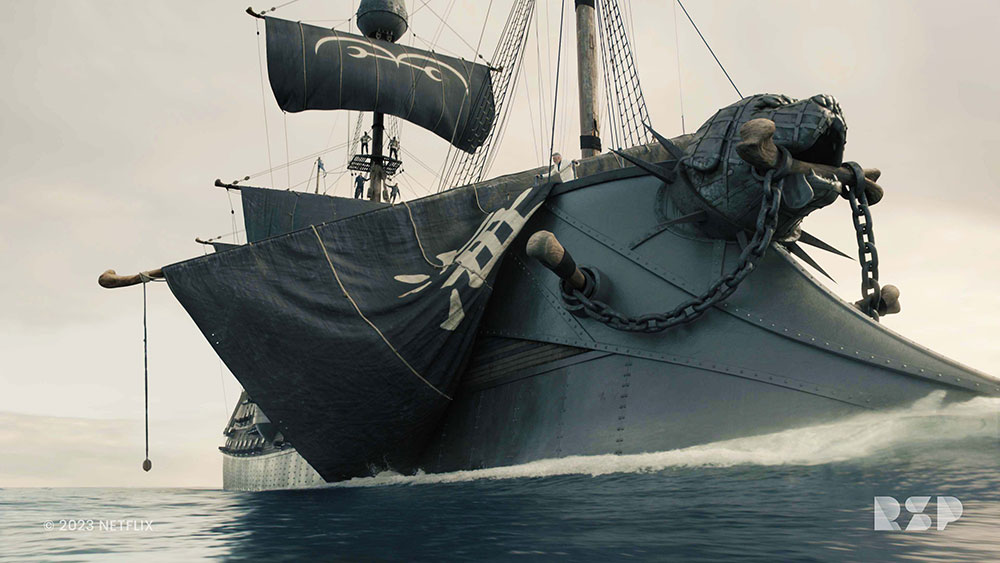
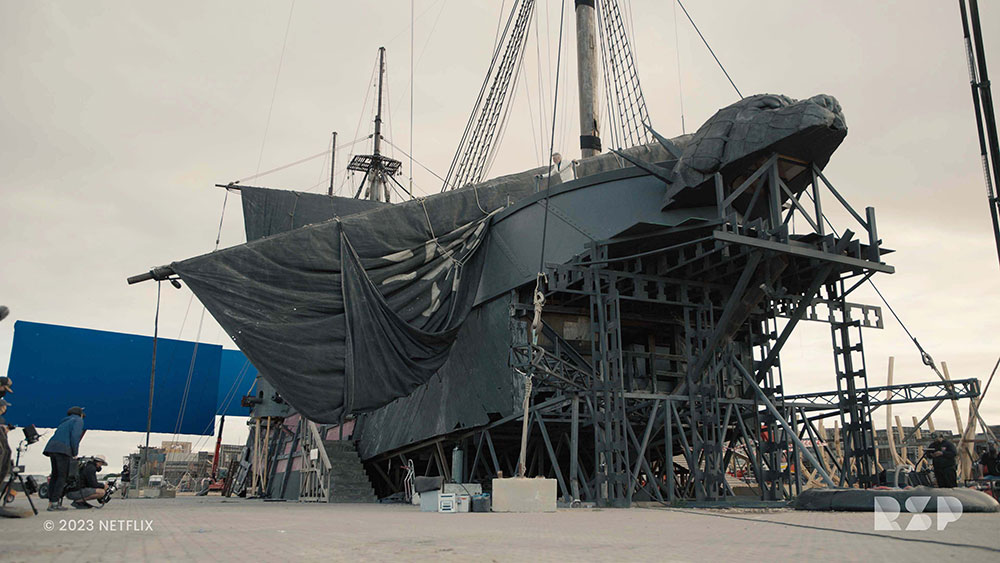
Digital water was also needed throughout – as it’s generally impossible to blend between live action and digital water – but accomplishing that also meant projecting and reflecting the coastline onto the water surface.
22K Fidelity
To a certain extent, look and feel that production had established for the titles and credits appearing throughout the show, helped establish the look for the map. Much effort went into recreating this map look within Nuke, making it possible to position and move elements as required. Dennis said, “We worked out that a resolution of roughly 22K would give us enough fidelity to get close to the map surface without losing detail. We also created, lit and rendered a 3D textured map surface with creases and shaping.
“Then in the final composite we combined the 2D map and the rendered surface, which helped give the final image more dimension and interest. We were also asked to add simple animation to the illustrations on the map which we did by applying 2D warping and articulation to vector images supplied by the client.”
The artists continued to hone their work on the ships, water and opening sequence until just a few weeks before the show’s debut on Netflix. “We are very proud of the way we were able to capture the spirit of the show,” Dennis commented. “It was very rewarding to be given so much freedom and ownership over our shots, and the results really do look good.” www.rsp.com.au




